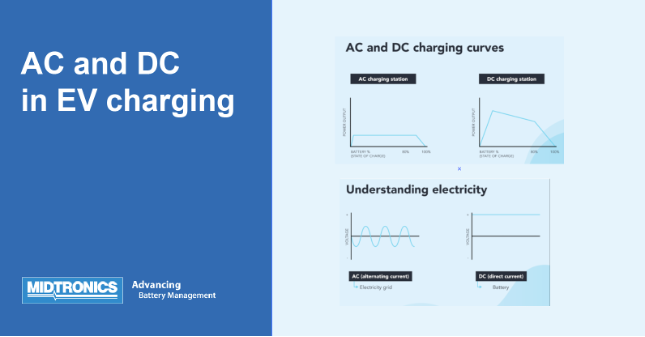Getting ready for EV servicing? Your clients may pose the question: what’s the difference between AC and DC chargers? Which is better to install in my garage?
When it comes to electric mobility, two separate electrical currents can be used to fuel an electric vehicle (EV)—AC (alternating current) and DC (direct current). But, before we dive in, there are a two things you should keep in mind:
- The power that comes from the grid, i.e., your domestic socket, is always AC. AC is an electrical current, or flow of charge, that periodically changes direction, i.e., it alternates (Alternating Current).
- Maximum power of 22 kW (requiring 32A main fuse in building)
- The energy that is stored in batteries is always DC (direct current).
- Maximum power of 350 kW (“fast charging”, generally only at larger charge stations)
Also note: no matter whether an EV uses an AC or DC charging station, the EV’s battery will still only store DC energy.
When you use a DC charging station, the conversion from AC (from the grid) to DC happens within the charging station—allowing DC power to flow directly from the station and into the battery. Because the conversion process happens inside the more spacious charging station and not the EV, larger converters can be used to convert AC power from the grid very quickly. As a result, some DC stations can provide up to 350 kW of power and fully charge an EV in 15 minutes.
AC charging stations require the onboard charger, which is often limited, to direct current. This means a slower charge. DC charging stations give a quick boost, before levelling down (think of filling up a glass of water; after a certain percentage you need to slow down the pouring, so you won’t spill). A faster charge may develop more internal heat, but other than that the only main difference between the two is cost. This is also why homeowners who opt to get a charging point, generally chose to get an AC charging point installed.
Are you getting ready to service your clients’ electric vehicles? We’re here to help you out. Check out our EV battery service products.


